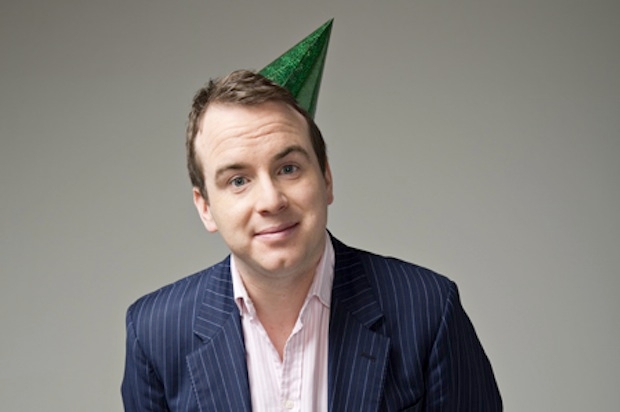Politics is everywhere in Edinburgh. It’s embedded in the architecture of the streets. The New Town, built in the latter half of the 18th century, is a granite endorsement of the Act of Union, a stone pledge of loyalty to Britain’s new Germanic monarchy in London. The layout forms an oblong grid. The horizontals of George Street, Princes Street and Queen Street intersect at right angles with Charlotte Street and Hanover Street. This makes the approximate proportions of a flag. There are rumours that a scheme was proposed to dig two diagonal avenues, meeting in a central X, which would have turned the New Town into a colour-free Union Jack. My hunch is that this is a fantasy dreamed up retrospectively by ingenious nationalists.
Politicians love treating Edinburgh as if it were a train set in the attic. In the 1970s, the council looked enviously at Glasgow and its sunken motorway running through the built-up centre. Plans were drafted for a copycat scheme in the capital. The most ambitious project involved a six-lane super-highway tunnelling through Calton Hill and soaring over Princes Street on concrete stilts. This ambitious folly might have been built had it not been vigorously opposed by a plucky young Labour councillor named Alistair Darling.
The latest scheme, conceived in 2003 and still unfinished, is a tramline with just 15 stops. Roadworks have snarled up the traffic for so long that the queues of angry, beeping cars have become a permanent fixture of the city. In 2009, with the project mired in delays and controversy, the council mounted a shrine on Princes Street — in the form of a motionless tram — which they hoped would inspire faith among the doubters and inculcate a belief that the promised trolleybuses would one day trundle upon the face of the earth. Four years later, the faithful are still waiting, and still praying. The budget of £375 million has risen to £1 billion (excluding the cost of a public enquiry into the whole sorry saga), and the first vehicle is due to rattle along the rails in 2014, fingers crossed. Each tram-stop, costing £66.5 million, could have paid for half a dozen schools. I expect some eager scribbler is already preparing a spoof of this fiasco for next year’s Fringe.
There’s a rich crop of political satire on offer this year. The best Fringe venue of the lot, the Canons’ Gait on the Royal Mile, achieved national prominence last May when Nigel Farage sought refuge there after being chased by a baying mob of students. The glory of the Canons’ Gait is that everything is free. If you enjoy the performers, you toss a few coins into the bucket on your way out. It never fails to deliver. I watched a highly cerebral comedian, Alistair Barrie, doing an impersonation of Danny Boyle dreaming up the 2012 opening ceremony while high on drugs. ‘We don’t mention the British empire ’cos every nation we invaded is backstage, with a flag and a smile, and we don’t want to spoil things.’ Barrie also performs a solo set at Wilkie House on Cowgate.
One of this year’s hot tickets is The Confessions of Gordon Brown at the Pleasance Courtyard. Brown is still regarded with genuine affection in his native land. ‘A big round of applause for The Leader,’ said a chirpy warm-up man as the actor playing Brown made his entrance. And they clapped! That won’t happen in London, where the show is due to transfer next month. Brown is portrayed as a cursing, twisted, spite-filled loser consumed with ambition and envy, and yet blessed with a prodigious intellect and an acerbic self-mocking wit. What an extraordinary creature: a half-mad saint compelled by a weird desire to increase the sum of human happiness by implementing a political manifesto derived from Adam Smith and Lenin.
As soon as he reaches No. 10, Brown’s sole aim is to cling to power by feeding voters the drugged meat of manipulative rhetoric. ‘Trust.’ ‘Leadership.’ ‘Steadfastness.’ ‘Reform.’ He sprinkles his speeches with whatever abstractions emerge during the weekly focus groups held in secret by Labour pollsters. He likens winning elections to cheating in exams: a smart politician repeats soundbites that he knows in advance will tickle the electorate’s prejudices.
The inner Brown is laid bare here by Ian Grieve with vigour, humour and style. Less satisfying is the play’s wonky structure and lack of shape. It flits between Brown’s boyhood, his adolescence and his later career with no artistic finesse or dramatic shape. And it’s too loosely anchored in time and place. When is Brown’s confession being delivered? Are we in Downing Street or in some dreamed-up wilderness following his defeat? And though he talks openly about his killer-instinct — ‘the stiletto is never far from the leader’s hand’ — he gives no details of his many hit jobs and he’s conspicuously silent about his role in the cash-for-honours enquiry, which was intended to terminate Blair for good.
Matt Forde, a self-confessed Blairite, performs his satirical show, The Political Party, at the Pleasance Dome. One of Forde’s favourite politicians is Nigel Farage (him again), whom he likens to a footballer with an exquisite ‘first touch’. Farage never pauses, never reflects, never ruminates (even when he’s knocked back a few too many halves). Asked what he had for breakfast, Farage replies instantly, ‘Tea, toast, Telegraph — the great British breakfast.’
Forde has time for politicians of every stripe. He loves Dennis Skinner’s empurpled indignation. He admires David Cameron for forcing his party into a gunshot wedding with modernity. He does an affectionate impression of Tony Blair reading out a fairy story with messianic zeal while conveying a heartfelt personal message to everyone in the room. He satirises Nick Clegg’s trick of adding fake pauses to his well-drilled slogans in order to make them sound ‘matey’. And he dismisses Ed Miliband as a floundering nearly-man.
The great attraction of Forde’s approach is his resistance to cynicism. He was a Labour activist at the age of 12 and he mocks the Westminster playground with a genuine love of democracy and a real affection for its stars. How wonderfully refreshing! A political wonk entirely untouched by smugness or sourness. His respect for the ballot box is so profound that he sports a newly pressed shirt and a gleaming Labour rosette every time he casts his vote. He’s 30 years old, by the way, and I’d give him two, or maybe three, elections before he starts putting his tick in the Conservative box.







Comments